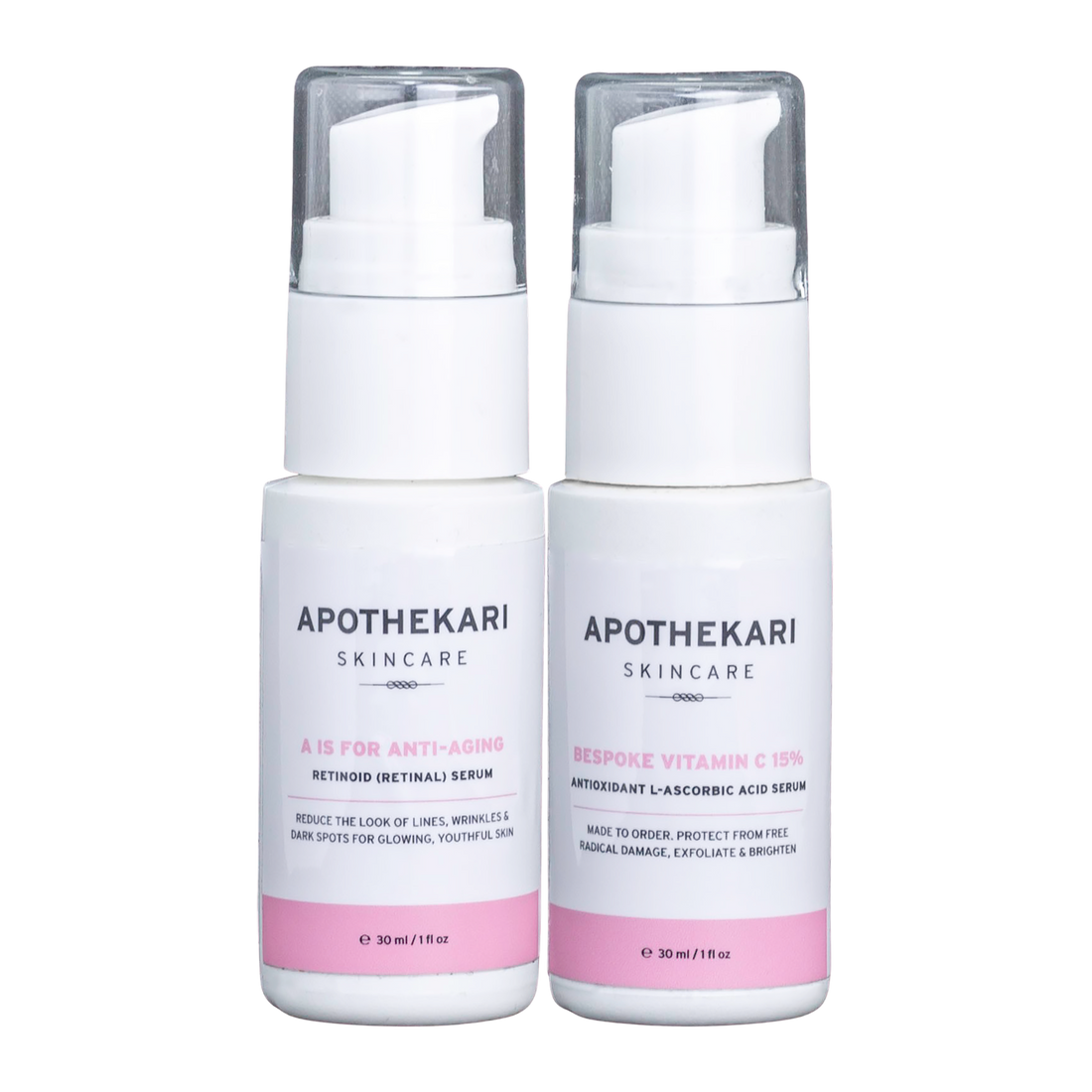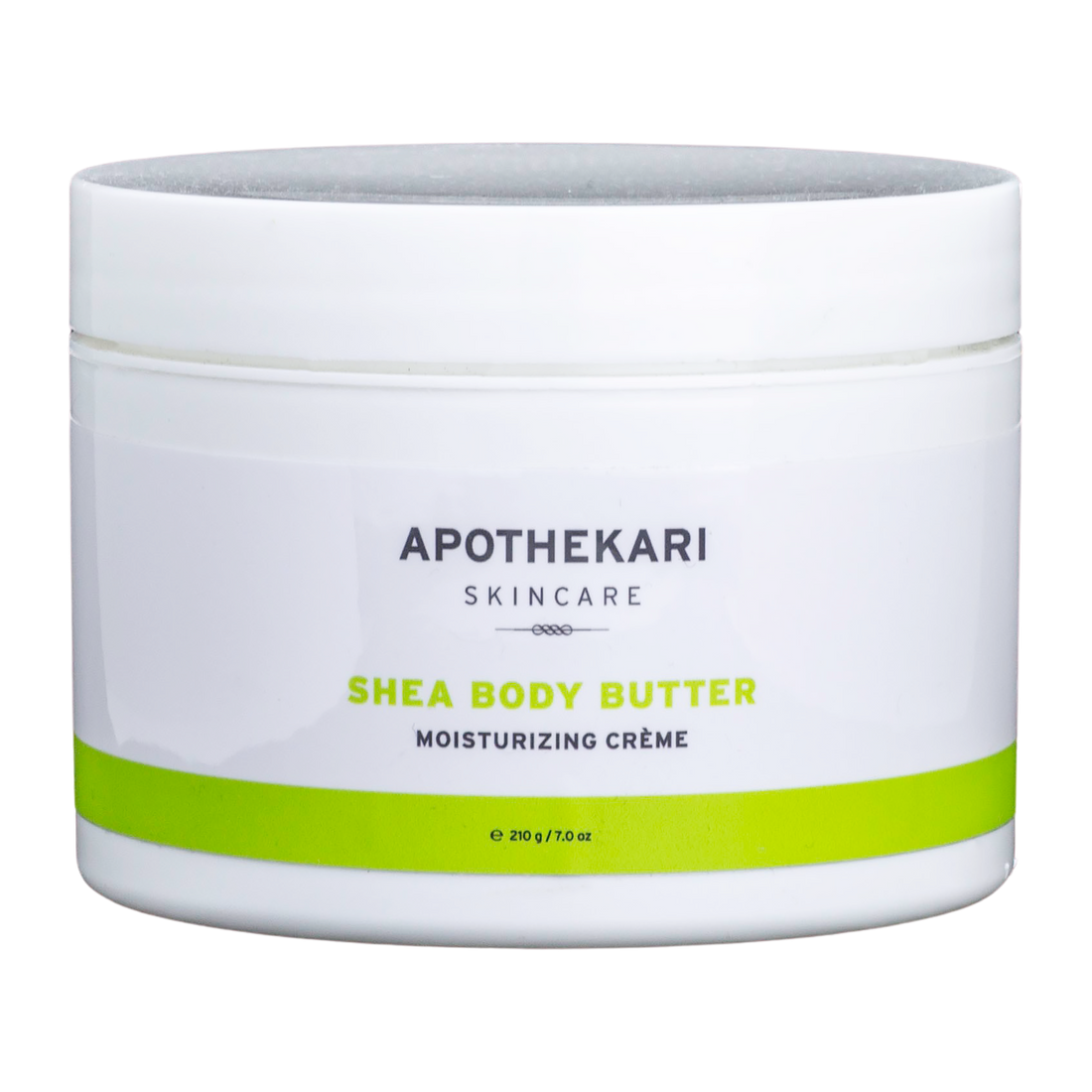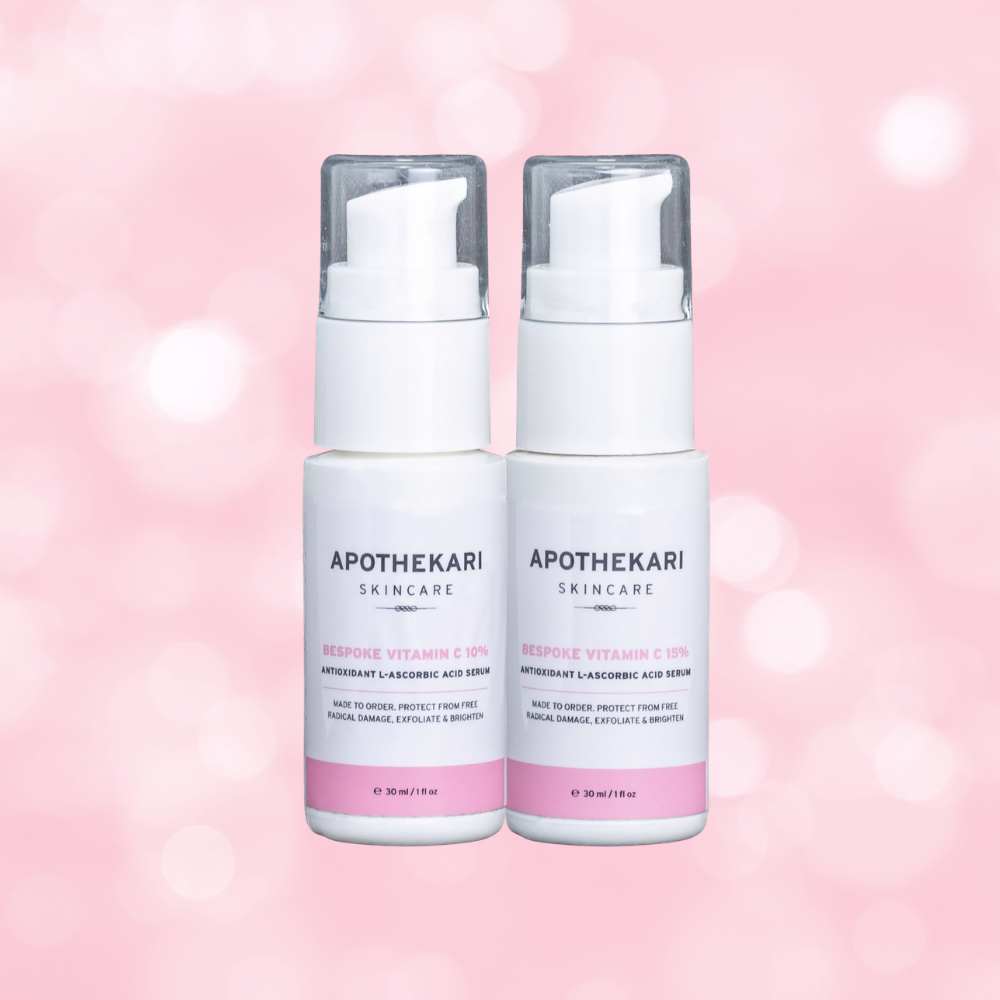Blog
5 Winter Sunscreen Tips
In this post I’ll share my top 5 winter sunscreen tips to help you keep your skin protected from the sun’s ultraviolet (UV) rays, which can damage skin year round, in both summer and winter. Shop Bespoke Vitamin C 15% Do I Need to Apply Sunscreen in Winter? The deep of January may seem an odd time to deliver winter sunscreen tips. However, you need to apply sunscreen regardless of the time of year. Two types of the sun’s UV rays can damage skin: UVA Rays. These deep penetrating rays are prevalent year round. They pass through glass and clouds and are associated with Aging and some types of skin cancers. UVB Rays. These shorter penetrating rays are the ones mainly associated with Burning. Like UVA rays, they may contribute to some types of skin cancer as well. While I’m all for sitting inside drinking warm cups of tea and reading books or bingeing on Netflix through the cooler months, being a shut-in probably isn’t wise. Someone has to buy groceries after all. And, fresh air is good for the soul! If I’m working, I’m usually close to the window so my skin is receiving daily UV exposure, even in the dead of winter. Which Sunscreen is Best for Winter? Here’s how to choose a sunscreen in the winter (or summer)—here are my 5 top winter sunscreen tips: Aim for a Minimum of SPF 30. An SPF 30 sunscreen blocks about 97% of UVB rays when applied correctly. Most health professionals will recommending SPF 30 as the minimum when it comes to sunscreen. Go for Broad Spectrum. Though most sunscreens should offer you protection against both UVA and UVB rays, some don’t. Look for those labelled as ‘broad spectrum’, which means that they will protect against both types of rays. Apply Enough. Studies have shown that most of us never apply enough sunscreen, meaning that we aren’t getting the protection indicated on the label. How much is enough? For the most part, you’ll need about ¼ teaspoon for your face (not including your neck, ears or head). I like to apply once, wait a bit and then apply again. This helps to make sure I cover any missed areas the second time around. If your decollete will be exposed, don’t forget that area. And try to get the tops of your hands too. Apply First Thing in the Morning. Doing this achieves two things. First, it helps to get you into the habit of wearing sunscreen every day, year round. Second, it ensures that you are protected even it you stay indoors. Remember that you don’t have to go outside for exposure to UV rays as UVA rays can penetrate through windows. Find a Sunscreen You Like. Experiment a bit. Find a sunscreen whose texture, fragrance and skin feel you like. If you’re happy with your sunscreen, you’ll be more likely to use it. Lastly, if you want to up the ante on protecting your skin against UV damage, consider adding in an antioxidant. Antioxidants protect skin differently than sunscreen can, by helping to minimize skin damage caused by exposure to free radicals. Free radicals are unstable molecules, which are generated by UV rays, pollution and other external factors. We like our Bespoke Vitamin C Serum, which boasts L-ascorbic acid, green tea extract and an arsenal of antioxidants to deliver the ultimate in skin protection. What’s your take? Any further winter sunscreen tips to offer?
Learn more3 Skin Care Ingredients You Should Be Using
When it comes to cosmetics, there are 3 skin care ingredients considered essential to great skin. Ask most skin care professionals and you’ll likely get consensus. It’s easy to get confused by marketing and side-tracked by trendy new ingredients, but if you want to make the most of your skin care dollars and simplify your routine, consider adding these 3 skin care ingredients to your daily line-up. SHOP RADIANT SKIN SET 1. Sunscreen It’s boring, I know. But, applying sunscreen every day is one of the smartest and most cost effective strategies you can employ in maintaining healthy and youthful skin. The sun and its UV rays are responsible for more than 80% of skin aging. Wearing sunscreen daily along with practicing smart sun habits (wearing hats, seeking shade, covering up and staying out of the sun during its peak hours) makes very good sense. Sunscreen should be worn every day, year round, even in deepest, darkest winter. The sun’s UVA rays, which are prevalent through the seasons, can penetrate through clouds and windows leading to skin aging. Choose between two types of sunscreens – physical or chemical. Physical sunscreens sit on top of the skin and deflect UV rays while chemical sunscreens are absorbed by the skin’s top layer and work to absorb UV energy and render it harmless. Both types of sunscreens are effective as long as you know what to look for: Seek out products labelled as ‘broad spectrum’. With physical sunscreens, make sure your formulation contains zinc oxide as it is the only physical blocker that covers the full UV spectrum. For chemical screens, ensure that you are protected against both UVA and UVB rays and that the ingredients are photo-stable, meaning that they won’t degrade upon exposure to sunlight. 2. Retinoids Derivatives of Vitamin A, retinoids are considered the gold standard when it comes to repairing sun-damaged and aging skin. They also stimulate the production of healthy, new skin cells. Retinoids are useful in fading age spots, reducing the appearance of fine lines and managing acne. When it comes to choosing one that is best for you, you can choose from one that is prescription strength or an over-the-counter option. Retinol, retinyl palmitate and retinaldehyde are the most popular OTC options. I’m a big fan of retinaldehyde because it is just one step away from converting to retinoic acid, the form of Vitamin A active at skin cells. It is also the gentlest form, which means that most individuals can tolerate it. Retinoids are light sensitive so they should be used at night. Apothekari A is for Anti-Aging boasts retinaldehyde, niacinamide and other ingredients to soothe irritation, minimize the appearance of fine lines and deliver brighter, firmer skin. 3. Antioxidants Antioxidants help to thwart the visible effects of daily environmental assault caused by free radicals, which are released by exposure to sunlight, pollution and other environmental stressors. Free radicals are unstable molecules which can cause a cascade of cell damage, leading to inflammation and cell injury. Antioxidants fight back by helping to slow down this process. Antioxidants benefit skin during the day and at night, but are essential as part of your morning routine. You can choose from a range of antioxidants including Vitamins C and E, alpha lipoic acid, green tea and coenzyme Q10. When it comes to antioxidants, the more the merrier! Check out our Bespoke Vitamin C Serum, available in two concentrations and formulated with Vitamin C, green tea extract plus additional antioxidants along with glycerin and sodium hyaluronate to protect and moisturize. Sunscreen, retinoids and antioxidants form the Holy trifecta when it comes to skin care. Are these 3 skin care ingredients included in your regimen?
Learn moreShea Butter : Skin Care
Shea butter, also known by its Latin name, Butyrospermum parkii, comes from the karite tree in Africa. Shea fruit are picked from the tree to yield a nutritious pulp that surrounds a large, oil-rich seed from which shea butter is extracted. Historically used for cooking, hair and skin care, this plant lipid is added to cosmetics for its emollient and smoothing properties. Shea butter has a rich, non-greasy texture and is quickly absorbed because its melting point matches that of our body temperature. It is yellow in colour when raw and becomes ivory or white in colour upon refinement. It is a rich source of antioxidants including vitamins a and e, quercetin, epicatechin gallate, gallocatechin, epigallocatechin, as well as skin-replenishing fatty acids including stearic, oleic and linoleic. It also contains cinnamic acid, which has anti-inflammatory properties and the ability to absorb UVB rays between 290 to 320 nm, giving it some limited capacity as a sun filtering agent. Find shea butter in skin-and hair-related products such as lip glosses, moisturizers, and hair conditioners for dry and brittle hair. It’s also used by soap makers and is an excellent ingredient for individuals who suffer from dry skin conditions. Medicinally, it is sometimes used as a base for ointments. Some of the isolated chemical constituents are reported to have anti-inflammatory, emollient, and humectant properties. Shea butter is a key ingredient in Apothekari Shea Body Butter, where it is enhanced with healing herbs, fresh oils, natural vegetarian waxes and an intoxicating blend of essential oils to heal dry, cracked and callused skin.
Learn moreWhy Your Skin Needs an Antioxidant Serum
Want to know why most skin care professionals recommend incorporating an antioxidant serum into your daily skin care regimen? This post explains exactly that. Shop Bespoke Vitamin C 15% Shop Bespoke Vitamin C 10% Simply put, an antioxidant is a molecule that inhibits the oxidation of other molecules. Oxidation is a chemical reaction that can produce free radicals, harmful substances that we hear a lot about when it comes to skin. You may have also heard free radicals described as Reactive Oxygen Species – ROS, which is a term used to describe them in living organisms. Free radicals hasten the aging process by contributing to chain reactions that ultimately may damage cells. Because they react with whatever is around, they can attack DNA, proteins and lipids, permanently changing their structure. When it comes to skin, the end result is damage, which we see as fine lines, wrinkles, hyperpigmentation and some types of skin cancer. Because free radicals also trigger inflammation, they have been associated with a breakdown of collagen, which leads to skin sag. Unlike free radicals, antioxidants are stable molecules. They help by donating one of their electrons to a free radical, thereby stopping the chain reaction that causes damage. Fortunately, our bodies manufacture a number of important antioxidants to help combat free radical damage. This includes glutathione and enzymes such as catalase and superoxide dismutase. The recommendation to eat (or in the case of your skin, to apply) antioxidants such as vitamin C, vitamin E and others is to help top up your body’s antioxidant store if too many free radicals are present. There is a lot of research to support the topical application of antioxidants, which have been shown to help protect skin from damage caused by UV rays, pollution and smoke. There isn’t one ‘miracle’ antioxidant and your skin benefits from a mix. The following have good clinical studies to support their efficacy in skin care: Vitamin C. The L-ascorbic acid form is backed by the most science Vitamin E. Works in tandem with Vitamin C to protect skin Ferulic acid. Helps to boost the stability of vitamins C and E Green Tea Polyphenols – Epigallocatechin-3-gallate (EGCG) is thought to have 25-100 times more antioxidant ability as vitamins C and E. Green tea contains other polyphenols (epicatechin, epicathechin-3-gallate, epigallocatechin) with excellent antioxidant activity. Superoxide dismutase and catalase. Enzymes found naturally in our bodies. Resveratrol. Genistein. From soy. Lycopene Coenzyme Q10. This list is by no means exhaustive and as more research becomes available, it’s certain that we’ll discover additional antioxidants that can help skin. Our Bespoke Vitamin C Serum, available in both a 10% and 15% concentration, contains Vitamin C (as L-ascorbic acid), Vitamin E, green tea plus additional antioxidants in a light, hydrating formulation to protect, repair, brighten, exfoliate and more. Which Antioxidant Serum is Right For You? As with any skin care product, your antioxidant serum must be formulated appropriately to ensure that it is stable, can penetrate your skin and contain a high enough concentration to do its job. This is where sticking with a reputable brand makes sense. The following guidelines will help you to find one that works: To get the most bang for your buck, seek out ingredients that deliver more than just antioxidant protection. For example, Vitamin C not only protects against free radical damage, but also brightens skin tone and promotes collagen synthesis at higher concentrations. Opt for a product with a combination of ingredients, which usually performs better than just one single trendy ingredient. Apply antioxidants in the morning prior to UV exposure. UV rays are one of the biggest causes of free radicals. Although this post discusses an antioxidant serum, there is no reason that you can’t swap the serum for a cream or lotion. A serum is just a delivery system for the ingredients inside so if you lean towards cream or lotion formulations, go with that. Do you incorporate an antioxidant into your skin care routine?
Learn more



